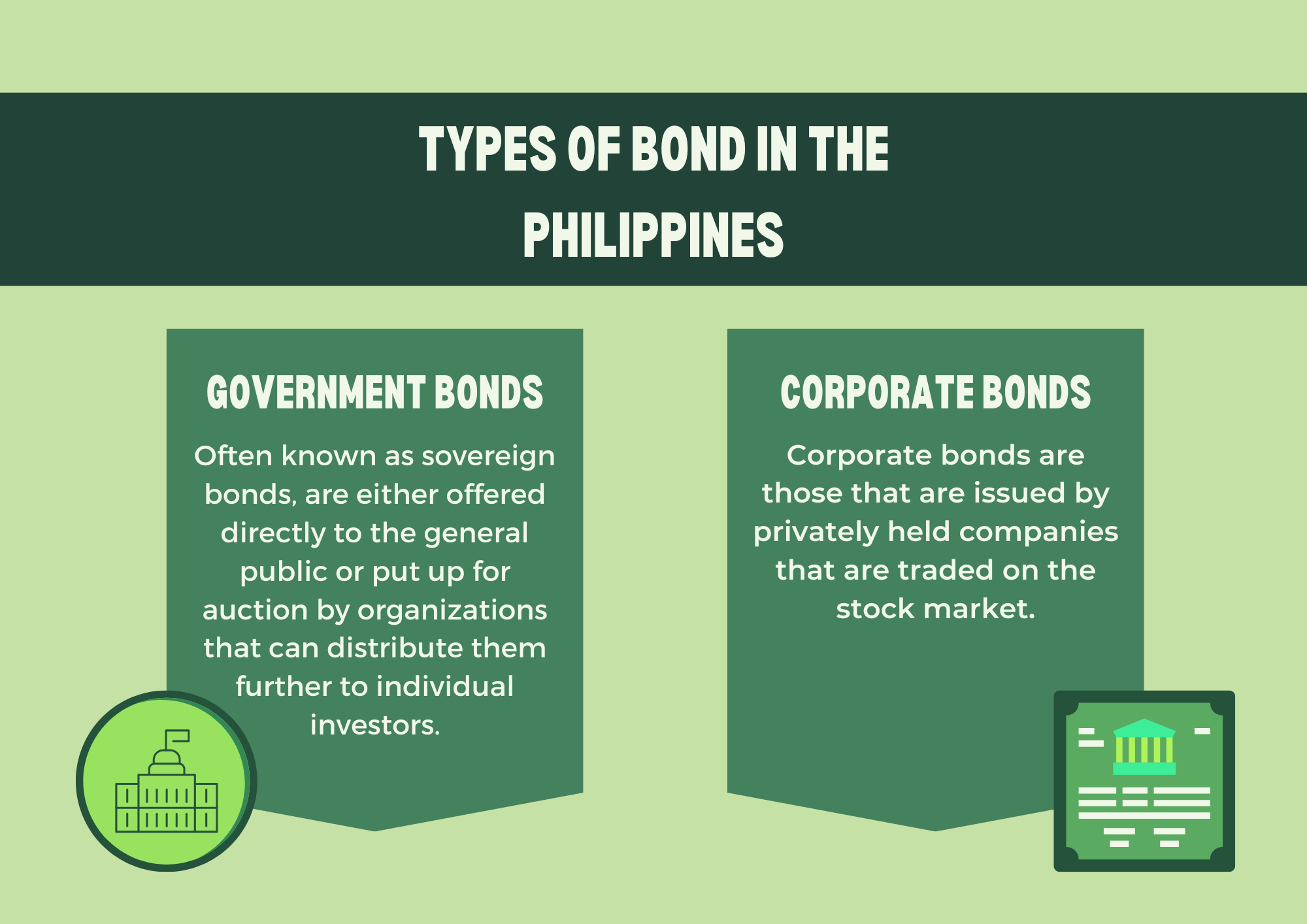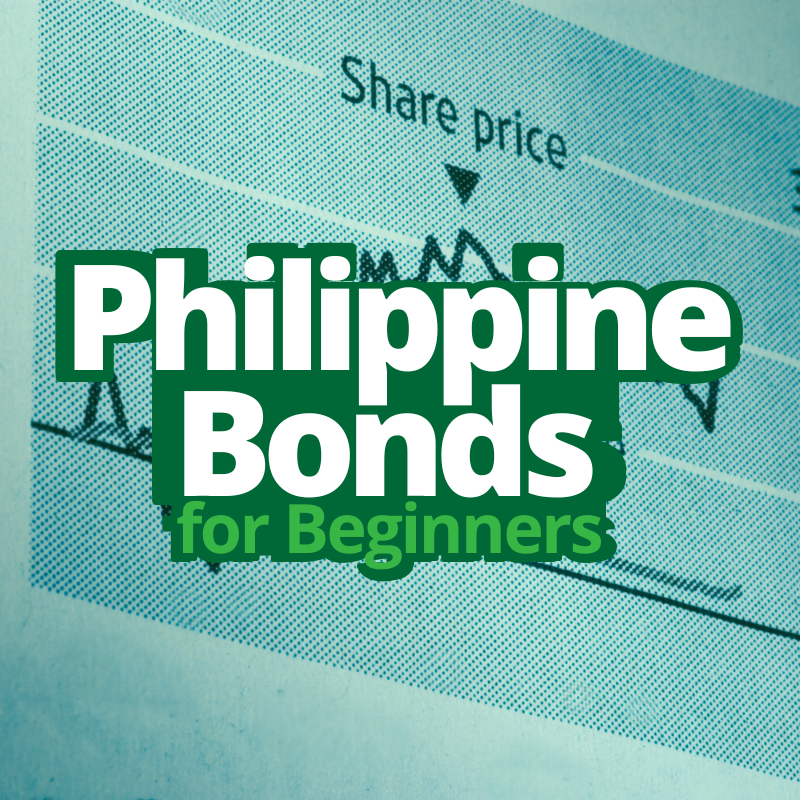No products in the cart.
Financial, Entrepreneurs, Family And Children, Millennial, Stock Market, Working class
Essential Philippine Bonds for Beginners: A 2023 Guide to Secure Investments

What to do When You Start Investing in Bonds? Increase your revenue sources by making investments. Many financially aware Filipinos are expanding their portfolio with common investment alternatives like stocks and mutual funds. Even while investing carries some risk, many people consider the prospect of earning better returns to be worth the risk. Mins to Read: 12 minutes Age: 21 – 41 years old.

However, the same risk is what deters many other Filipinos from making investments. You don’t want to risk these for income that isn’t completely certain when you have a family to support or a financial goal to work toward. Philippine Bonds, one of the safest investment products on the financial markets, may not be well-known to many Filipinos. Here is a guide to bond investing if you’re looking for low-risk, high-return investments:
Basic Bond Characteristics
A bond is merely a loan that a business has obtained. The company receives funding from investors who purchase its bonds rather than a bank. An interest coupon or the annual interest rate paid on a bond stated as a percentage of face value, is what the corporation gives in return for the capital.
The corporation completes the loan by returning the principal on the maturity date and paying the interest at predetermined intervals (often annually or semiannually). In contrast to stocks, the terms of a bond’s indenture—a legal document defining the bond’s specifications—can vary widely. Since each bond issue is unique, it’s critical to comprehend the fine print before buying. When thinking about a bond, there are six crucial characteristics you should pay attention to.
1. Maturity
The bond’s principal or par value is paid to investors on this date, marking the conclusion of the company’s bond obligation. Therefore, it defines the lifetime of the bond. One of the main factors that investor compares to their investment goals and time horizon is the maturity of a bond. Maturity is frequently divided into three categories:
- Short-term: Bonds in this category often mature within one to three years.
- Medium-term: Maturity dates for these sorts of bonds are generally over ten years
- Long-term: These bonds often have longer maturities.
2. Secured/Unsecured
Unsecured or secured bonds are both acceptable. In the event that the issuer is unable to pay the debt, a secured bond guarantees a set of assets to bondholders. On the loan, this asset is also referred to as collateral. As a result, the asset is given to the investor in the event of a bond issuer default. One kind of secured bond that is backed by the owners’ titles to their homes is known as a mortgage-backed security (MBS).
On the other hand, there are no collateral backing unsecured bonds. Therefore, only the issuing corporation is responsible for guaranteeing the interest and principal. These bonds, also known as debentures, refund little of your money if the business fails. They are significantly riskier than secured bonds as a result.
3. Liquidation Preference
When a company declares bankruptcy, it pays investors back as it liquidates in a specific order. A company starts paying off its investors once it has sold all of its assets. Senior debt is debt that must be paid first, followed by junior (subordinated) debt. Stockholders get whatever is left.
4. Coupon
Interest is paid to bondholders in the form of a coupon and is typically paid annually or semiannually. The nominal yield or coupon rate is another name for the coupon. Divide the annual payments by the bond’s face value to determine the coupon rate.
5. Tax Status
Some government and municipal bonds are tax-exempt, thus income and capital gains are not subject to taxation, even though most corporate bonds are taxable assets. Bonds that are tax-exempt typically have lower interest rates than comparable taxable bonds. To compare the return with that of taxable instruments, an investor needs to figure out the tax-equivalent yield.
6. Callability
An issuer may redeem some bonds before they mature. If a bond has a call provision, the firm may choose to pay it off early than scheduled, typically at a little premium over par. If interest rates make it possible for them to borrow money at a better rate, a firm may decide to call its bonds. Investors are drawn to callable bonds because they have higher coupon rates.
What are the Types of Bonds?
Government bonds and corporate bonds are the two types of bonds in the Philippines. 
A. Government bonds
Government debt securities, often known as sovereign debt instruments, are either offered directly to the general public or auctioned by organizations that distribute them further to individual investors. A government issues a debt security known as a government debt instrument to fund its obligations and expenses. Periodic interest payments on these debt securities are known as coupon payments. Since the issuing government backs these instruments, they are frequently seen as low-risk investments.
B. Corporate bonds
Corporate bonds are those that are issued by privately held companies that are traded on the stock market. To finance operations or grow their business, corporations may issue bonds to investors. A sort of financial product sold to investors is a corporate bond, which is issued by a business. The investor receives a predetermined amount of interest payments at either a fixed or variable interest rate in exchange for providing the firm with the money it requires. The bond “reaches maturity” when it stops making payments and the initial investment is refunded.
How Can You Profit from Bonds?
There are two ways to profit from debt instrument investments. The first is to hold those instruments until they mature and earn income from them. Typically, interest on these securities is paid twice a year. Selling debt securities for more than you paid for them initially is the second way to make money with these financial instruments. For instance, if you purchase debt securities for Php 10,000 at face value and later sell them for Php 11,000 when their market value rises, you can keep the difference of Php 1,000. There are two basic causes for debt security price increases.
The price of the security will normally increase if the borrower’s credit risk profile changes, making it more probable that they will be able to repay the security when it matures. Additionally, an existing debt security with a higher interest rate will appreciate in value if the current interest rates on newly issued instruments decline.
Debt security yields, or the interest rate a debt instrument pays, and debt security prices typically fluctuate in the opposite way, or in an inverse relationship. Prices for old debt instruments are likely to decline as interest rates rise because the coupon they provide is less valuable than that of new instruments. Yields have increased as a result of the Federal Reserve aggressively raising interest rates in 2022, leading to a broad decline in debt security prices. Not all debt instruments accrue interest. Some instruments, referred to as zero-coupon debt instruments, provide a return after maturation. These instruments are typically sold at a significant discount to their face value because they don’t pay interest.
How To Start Investing In Bonds?
Although buying stocks and bonds share many similarities, there is no relationship between the locations at which each can be done so. Each asset begins from a slightly different place. Bonds are not publicly traded, whereas equities are on a centralized market. Bonds must be bought “over the counter,” which is another way of saying that investors must use a broker to buy the majority of different types of bonds; the exception is T-bonds, which are bought directly from the government. Investors might look for exchange-traded funds that deal in bonds outside of brokers and official websites. There are some fundamental prerequisites that you must meet, regardless of how you obtain them.
- Valid ID Cards
- TIN, or tax identification number
- Starting capital is Php 10,000 or Php 50,000
- The account where your capital and interest will be deposited when it reaches maturity
Here is a quick rundown of how to get started buying bonds:
A. Buying Bonds From A Broker:
The first step in getting into bond investing is to purchase through an internet broker. You can do this through the Philippine Dealings and Exchange Corporation (PDEX), which serves as the secondary market. It would be necessary for you to open an account with brokers, and there would be fees associated with trading with them. You are essentially buying from other investors who are eager to sell when you buy through a broker. You can buy a bond directly from the underwriter investment bank in an initial bond offering to get a discount off the bond’s face value.
B. Purchasing Through An Exchange-Traded Fund:
ETFs are frequently used to purchase bonds from a variety of corporations, and some funds have distinct target areas, such as short-, medium-, and long-term bonds. For individual investors, buying bonds through funds is the best option because you don’t have to buy in $1000 increments and they offer rapid diversification.
C. Buying From The Government:
Treasury Direct’s website allows you to purchase government bonds. This can be advantageous as you won’t have to pay a broker’s fee.
Should You Invest in Bonds?
For cautious Filipinos looking for secure investments as opposed to taking a chance on the stock market, bond is an the ideal option. You are less likely to suffer losses because bonds are not immediately impacted by stock market highs and lows. It is a superior choice for those who value dependable passive income from their bonds’ recurring interest. This makes it a wise choice for investors.
- First-time investors seeking a secure starting point
- Investors want to balance off their risky assets with safe long-term ones
- Those seeking recurring income to offset their household’s expenses
- Retired people seeking supplemental regular income.
What Should You Watch Out For?
Going for the bonds with the highest yields, or those that pay out the most, is the biggest trap when purchasing bonds. The two main risks for an investor in bonds:
- Whether the bond’s issuer will repay the bond with interest
- Whether interest rates will increase generally
The bond will lose value if the issuer cannot pay back the bond or if interest rates increase. A bond’s yield, or the portion of its price paid to investors, increases as its price decreases. A high-yielding bond may foretell difficulties in each risk scenario. A bond may have been discounted by investors who thought they would get less money from the issuer than its full face value, making it more affordable and yielding.
A bond’s long maturity, perhaps 10, 20, or 30 years, may also increase its yield. These bonds reward investors for locking up their money for such a long time with a greater yield. However, bonds with such protracted maturities are more vulnerable to inflation and might see significant value declines. Long-term bonds may take a very long time to mature, up to 30 years in the case of some government bonds, even if investors can recover the full face value provided the issuer can pay it. You don’t want to find yourself in this predicament. High-yield bond should be properly examined, or you can think about hiring experts to do it for you.
Risks of Bonds
Due to their propensity to be comparatively safe investments, a bond is an excellent way to generate income. But they do include some dangers, just like any other investment. The most typical hazards associated with these investments are listed below.
A. Interest Rate Risk
Bond prices typically decline as interest rates rise and vice versa due to their inverse connection. When rates differ significantly from what the investor anticipated, interest rate risk occurs. The investor may be forced to prepay if interest rates drop dramatically. The investor will be forced to hold an asset paying less than market rates if interest rates rise. Because it is more difficult to anticipate market movements further into the future, the longer the time until maturity, the more the interest rate risk an investor carries.
B. Credit/Default Risk
The possibility that the obligation’s interest and principal payments won’t be made on time is known as a credit or default risk. Investors who purchase bond anticipate that the issuer will fulfill its obligations to pay interest and principal, just like any other creditor. When evaluating corporate bond, an investor should consider the likelihood that the issuer will not be able to repay the debt. Safety typically indicates that the business has more operating revenue and cash flow than debt. The investor would wish to steer clear if the opposite is true and the debt outweighs the available cash.
C. Prepayment Risk
Prepayment risk is the possibility that a certain bond issuance will be repaid sooner than anticipated, typically via a call provision. Because the corporation only has an incentive to return the debt early when interest rates have significantly decreased, this could be terrible news for investors. Investors are forced to reinvest money in an environment with reduced interest rates rather than keeping a high-interest investment.
READ MORE RELATED BLOGS!
READ MORE AND SHARE!
TSOK Chronicles: Unleashing Passion, Dedication, and Excellence in 2024
2023 Your Practical Wedding Guide
Investments and Finance Ultimate Guide
If you like this article please share and love my page DIARYNIGRACIA PAGE Questions, suggestions send me at diarynigracia@gmail.com
You may also follow my Instagram account featuring microliterature #microlit. For more of my artworks, visit DIARYNIGRACIA INSTAGRAM


Peace and love to you.